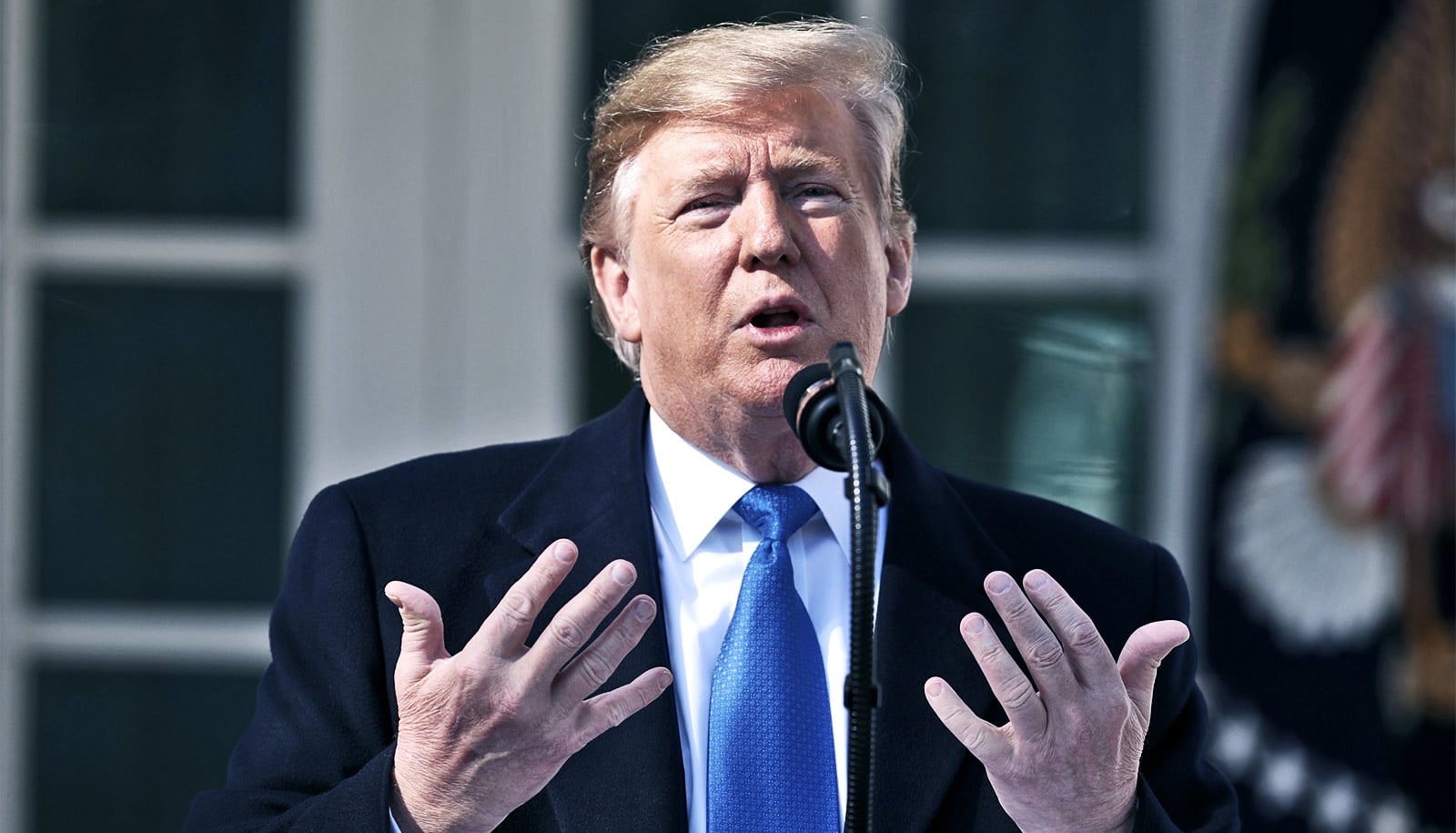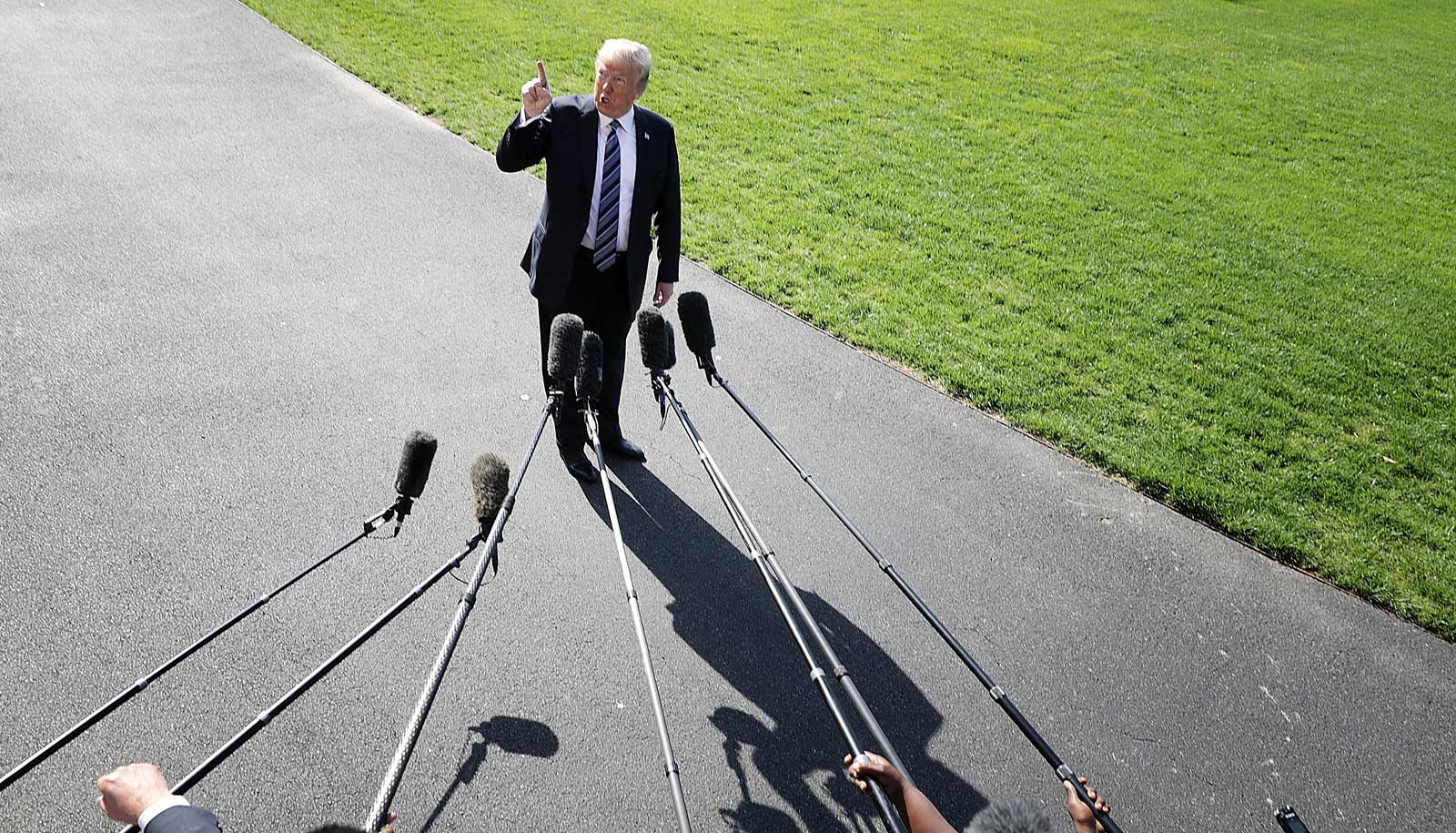When an American president declares a national emergency, what new executive powers emerge?
That question is on the minds of many in the wake of President Donald Trump’s February 15 declaration in order to move forward with securing funds to construct a wall or barrier along the US-Mexico border—an action he took after his administration failed to obtain its requested budget for the wall from Congress.
The declaration now faces a slew of legal challenges and is under scrutiny by members of Congress who recently approved a resolution to terminate the declaration in the House of Representatives. The Senate plans to vote on the resolution in March.
Elizabeth Goitein, codirector of the Liberty & National Security Program at New York University Law’s Brennan Center for Justice, led the creation of a database that outlines presidents’ powers and their uses during national emergencies. She is also author of The New Era of Secret Law, a report that discusses how government officials have amassed power over the years through non-democratic processes.
Here, Goitein discusses the legality of Trump’s declaration, and the broader implications it may have for the country.
What does a national emergency enable a president to do?
More than a hundred different statutory provisions give the president extraordinary powers when he declares a national emergency. These powers span almost every conceivable subject area. While some are modest in scope, others are incredibly potent, including powers to shut down communications facilities, freeze Americans’ bank accounts, and detail US troops to foreign countries.
The process for accessing these powers is almost perfunctory. Under the National Emergencies Act of 1976, the president can declare a national emergency simply by signing his name to a proclamation, publishing it in the Federal Register, and transmitting it to Congress. The law does not define a national emergency or include any criteria for issuance.
When have national emergencies been declared in the past?
The vast majority of declarations have been issued under the International Emergency Economic Powers Act (IEEPA), which has generally been used to impose economic sanctions on foreign governments, officials, or groups whose actions are deemed to pose a threat to the US national security, foreign policy, or economy.
Presidents have issued only a handful of non-IEEPA declarations. Examples include the declaration establishing a naval blockade against Cuba after it shot down US planes in 1996, the 9/11 emergency declaration in 2001, and the declaration surrounding the outbreak of the H1N1 virus in 2009.
Why are there so many powers currently available to a US president?
There are actually fewer now than in past decades. A special Senate committee in the mid-1970s found that there were more than 400 laws giving the president special powers during national emergencies. Today, that number is “only” 136, 123 are available when the president alone declares the emergency, while the other 13 require a congressional declaration.
These laws have been enacted over many decades, and the simplest explanation for the sheer number of them is that Congress hasn’t been keeping track. It has been more than 40 years since Congress took stock of the legal system for emergency powers.
Do you think that the daily lives of Americans will be affected by this national emergency?
Without a doubt. To name some obvious examples, much of the land along the border is privately owned, and the government will have to acquire it through eminent domain. That means hundreds if not thousands of landowners will be forced to relinquish property to the government.
Also, a large portion of the funding for the wall will be diverted from other military construction projects. While the president has not yet identified those projects, military construction is generally connected to military bases or similar facilities. The abandonment of $3.5 billion worth of construction projects will surely have concrete effects on the daily lives of a large number of service members and their communities.
And then there is the well-documented environmental damage that will be caused by a 2,000-mile wall. As with many types of environmental degradation, the long-term effects of this damage on people’s daily lives might feel remote, but they are almost certain to be among the most profound consequences of this misadventure.
What are your primary concerns following the president’s declaration?
Trump’s declaration is not the first misuse of the legal system for national emergencies. Previous presidents have issued declarations under conditions that probably fell short of true “emergencies,” and have routinely prolonged states of emergency far longer than necessary.
Nonetheless, Trump’s declaration is an unprecedented abuse, not only because the situation at the border does not approach an emergency under any definition of that term, but—even more important—because he is using emergency powers as an end-run around Congress and the constitutional appropriations process.
I’m concerned that if Congress and the courts allow this to stand, it will set a precedent for future abuses by this president and others.
Can you provide examples of presidential abuses of powers during a national emergency? What checks are in place to prevent them?
There have been misuses of emergency power throughout our nation’s history, but truly egregious abuses have been rare and have relied upon claims of inherent constitutional authority rather than the statutory powers available during national emergencies.
FDR, for instance, claimed inherent executive authority when he ordered the internment of Japanese Americans during World War II, as did George W. Bush when he signed off on a program of torture after 9/11.
Misuses of national emergency declarations have been less flagrant, but they have happened. George W. Bush relied on the 9/11 emergency declaration to call up reservists and implement “stop-loss” during the Iraq War, which had nothing to do with the attacks of 9/11. Trump in 2017 relied on the 9/11 emergency declaration to fill a chronic shortage in Air Force pilots.
The primary checks against executive branch overreach, in this context as in all others, are the other two branches of government: Congress and the courts. Of course, the American public has a role, as well. If a president’s actions are sufficiently unpopular with the public—and if people are sufficiently vocal and persistent in their opposition—that can lead the president to back down on his own.
A coalition of 16 states just filed a lawsuit against the president, calling the declaration “unconstitutional.” Is there a precedent for that kind of public challenge?
In short, no. Actions that have been taken under emergency declarations have previously been challenged in the courts (for instance, targets of sanctions under IEEPA have sued to have the sanctions removed). But the courts have never had to address the question of whether the National Emergencies Act allows the president to access funds Congress has specifically withheld.
Who officially declares a national emergency over?
The president, of course, can terminate a state of emergency at any time. States of emergency automatically expire after one year unless the president renews them (which presidents routinely do, usually for many years on end).
Congress can vote at any time on a joint resolution to terminate a state of emergency, but the resolution only becomes law if the president signs it. If he vetoes it, Congress has to muster a supermajority to override the veto. Still, special rules in the National Emergencies Act create an expedited process for the legislation and require both houses of Congress to take a vote, which cannot be filibustered in the Senate.
Finally, if a court were to find that a declaration of emergency was unlawful, the court could issue an injunction against implementing it.
Source: NYU


